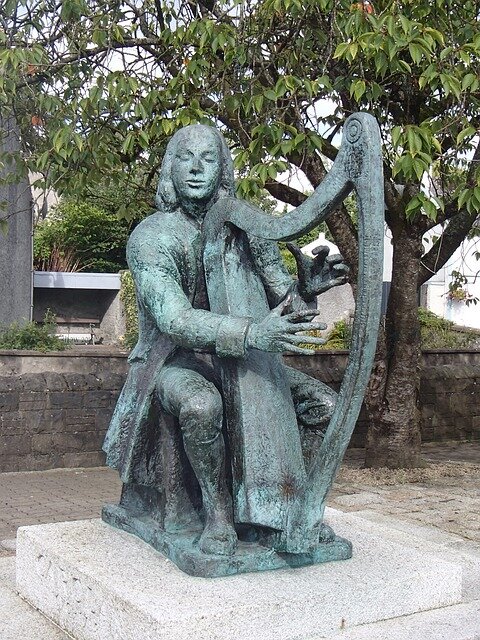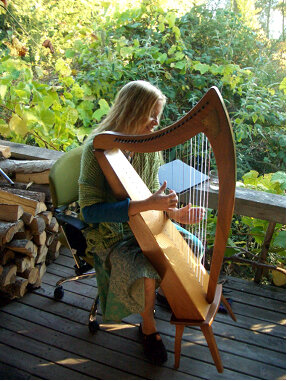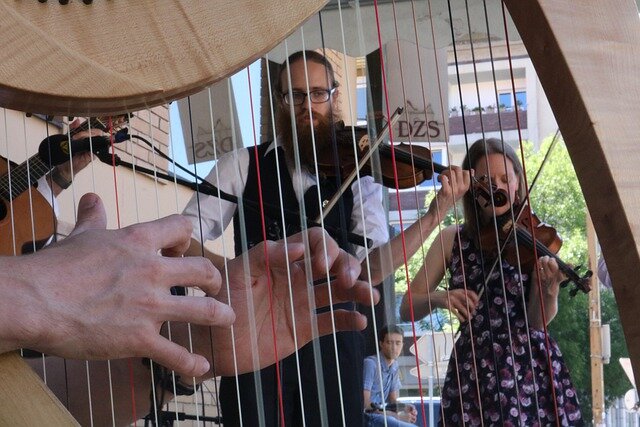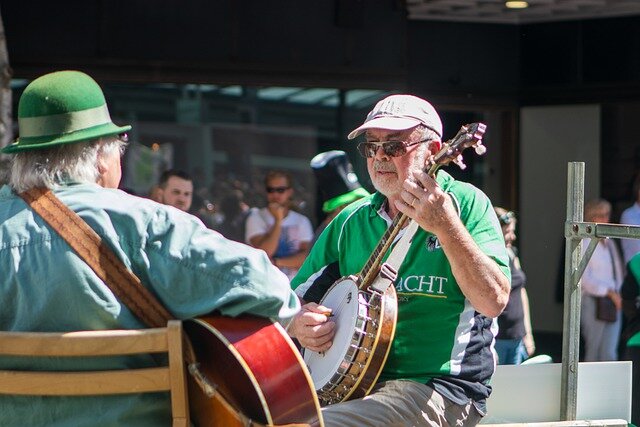I’ve written many articles about St. Patrick’s Day, and you can read most of them by entering “St. Patrick’s Day” in our search engine. I’ve gone over the history of this holiday and there’s even a quiz about Irish foods. I’ve also written about famous Irish authors. This year, I’m going to talk about Irish music, its origins and development, famous Irish composers, and Irish recording artists. Hopefully, you will be inspired to listen to some traditional Irish music as well as contemporary Irish bands and artists such as Hozier, The Pogues, U2, The Cranberries, and The Waterboys (A British-Irish folk-rock band).
Music was brought to Ireland by the Celts about 2,000 years ago. The Celts brought the harp with them and their music was said to influenced by Eastern music. The Irish harp is believed to have originated in Egypt. Irish traditional music began as an oral tradition. There were often subtle and not too subtle variations of the same songs because nothing was written down. Singer/musicians were free to add their interpretations and showcase their own abilities. This practice is still encouraged in Ireland for folk music instead of the rigid note-by-note exactness demanded by many other cultures.
As the popularity of Celtic music spread, harpists were paid to entertain Chieftains and to compose music for nobles. These professional musicians thrived until the Flight of the Earls in 1607 when Irish Chieftains were forced by invaders to flee their lands. Without the patronage of a chieftain, musicians were forced to roam from place to place playing wherever they could to support themselves and their families.
Colonization attempts after the initial invasions threatened the preservation of Irish culture. The British crown passed laws forbidding the Irish to participate in any traditional festivals or celebrations of Irish history or culture.
Irish tunes still weren’t officially written down until 1762. Music collectors began to travel around Ireland compiling and preserving Ireland’s musical history. Forty-nine Irish airs were published by the Neal Brothers in Dublin. In 1792, Edward Bunting made what’s considered to be the most comprehensive collection of Irish folk tunes during the Belfast Harp Festival. Bunting’s manuscripts are still in existence today.
During the Great Famine of the 1840s, over a million people died taking many of the traditional Irish songs, folk tunes, and stories to the grave with them. However, the two million people who emigrated from Ireland helped spread Irish culture and a love for Irish music around the world.
In the United States, Irish immigrants soon established communities in New York, Boston, and Chicago preserving Irish culture and Irish music for future generations. In the early 20s, 78-RPM recordings of Irish musicians were being made and distributed through Irish American communities. Recordings found their way back to Ireland. Much to the surprise and delight of the Irish, these recordings of Irish dance tunes played with fiddles, Irish harps, and uilleann pipes were sped up and accompanied by the piano.
Until the 1960s, Irish music remained primarily in pubs or meeting places where crowds gathered for dancing. Irish composer Sean ỚRiada created music based on traditional Irish folk music using traditional Irish instruments, fiddle, flute, accordion, bodhran, and uilleann pipes for listening, not dancing. The first concert of his music was held at the Gaiety Theatre in Dublin instead of a public house or concert hall.
This new interpretation of Irish music gave rise to groups such as Planxty and the Bothy Band. Many talented bands such as U2 and the Cranberries were to follow later as Irish musicians began to infuse rock, pop, punk, and alternative music with traditional Irish music to create their own unique sounds.
While doing research for this article I came across an article that impressed me so much I want to share the link with you. It is a list of twelve Irish composers you should know. Short music clips are embedded, so you can listen to a sample of each composer’s work along with a way to listen to each piece in its entirety on Spotify.
Here is the link, https://www.wfmt.com/2020/03/16/12-irish-composers-you-should-know/
Sources for this article:
https://www.musicalpubcrawl.com/story-of-irish-music
https://www.irishcentral.com/roots/history/history-origins-traditional-irish-music
https://www.wfmt.com/2020/03/16/12-irish-composers-you-should-know/









